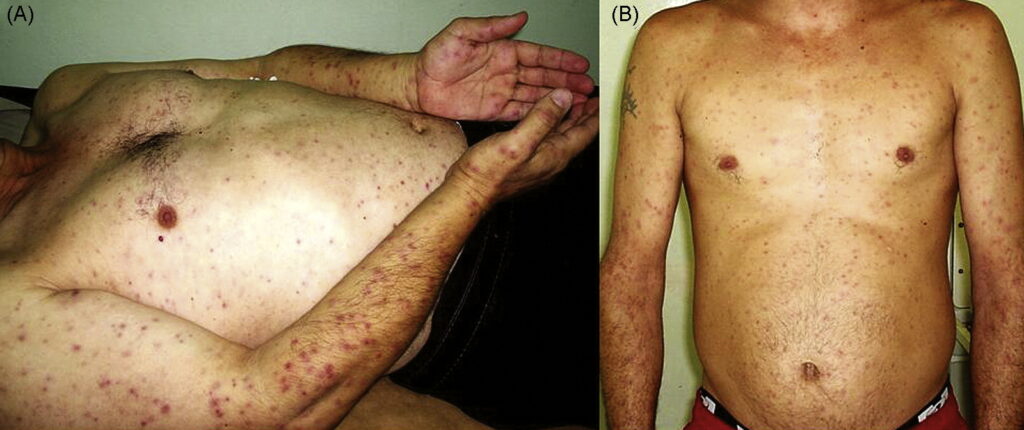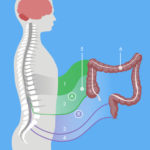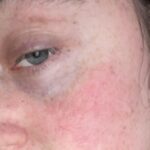Boutonneuse fever, also known as Mediterranean spotted fever (MSF), is a tick-borne infectious disease caused by the bacterium Rickettsia conorii. Predominantly found in regions around the Mediterranean Basin, including Southern Europe, North Africa, and parts of the Middle East, it poses significant health risks to those exposed to infected tick bites. Awareness of its symptoms, causes, and preventive measures is crucial for early intervention and effective treatment.

Causes and Transmission
Boutonneuse fever is primarily transmitted through the bite of ticks from the Rhipicephalus sanguineus species, commonly referred to as the brown dog tick. These ticks become carriers of Rickettsia conorii after feeding on infected animals, such as dogs or rodents. Humans are accidental hosts and typically contract the disease when an infected tick bites and transfers the bacteria.
Risk Factors:
- Prolonged exposure to tick-infested areas
- Outdoor activities in endemic regions
- Poor tick-prevention measures for pets
Transmission Pathway:
graph TD
A[Infected Animal] -->|Tick bite| B[Tick]
B -->|Tick bite| C[Human Host]Symptoms of Boutonneuse Fever
Symptoms usually manifest within 5 to 7 days after a tick bite and may vary in severity. The most common signs include:
- Eschar at the Bite Site:
- A blackened, necrotic lesion surrounded by redness is often one of the earliest indicators.
- Fever and Headache:
- High-grade fever accompanied by severe headaches.
- Rash:
- A maculopapular rash typically appears a few days after the fever onset, spreading from the extremities to the trunk.
- Muscle Pain and Fatigue:
- Generalized muscle pain and profound fatigue.
- Additional Symptoms:
- Nausea, vomiting, and swollen lymph nodes may also occur.
Diagnosis of Boutonneuse Fever
Timely and accurate diagnosis is essential to prevent complications. Diagnostic methods include:
Clinical Assessment:
- Patient History: Travel to endemic areas and recent tick exposure.
- Physical Examination: Eschar and rash observation.
Laboratory Tests:
- Serology:
- Detection of specific antibodies against Rickettsia conorii using immunofluorescence assays (IFA).
- PCR Testing:
- Polymerase chain reaction (PCR) for bacterial DNA identification.
- Blood Tests:
- Elevated liver enzymes and leukopenia may be observed.
Treatment Options for Boutonneuse Fever
Early treatment significantly reduces the risk of severe outcomes. The primary course of action includes:
Antibiotics:
- Doxycycline: The first-line treatment for all age groups except pregnant women.
- Chloramphenicol: Alternative option for patients with contraindications to doxycycline.
Supportive Care:
- Rest and hydration.
- Symptomatic relief with antipyretics and analgesics.
Prognosis:
With prompt treatment, most patients recover fully within 7 to 10 days. Delayed treatment, however, may lead to severe complications, including multi-organ failure.
Prevention Strategies
Preventing tick bites is the most effective way to avoid Boutonneuse fever. Key preventive measures include:
- Personal Protection:
- Wear long-sleeved clothing and tuck pants into socks while in tick-prone areas.
- Use EPA-approved tick repellents on skin and clothing.
- Pet Care:
- Regular use of tick-preventive treatments for pets.
- Frequent grooming and inspection for ticks.
- Environmental Management:
- Maintain clean surroundings and minimize tick habitats by trimming grass and disposing of leaf litter.
- Prompt Tick Removal:
- Carefully remove ticks with fine-tipped tweezers as soon as they are detected.
Boutonneuse fever, though geographically restricted, remains a significant health concern in endemic regions. Understanding its symptoms, transmission pathways, and treatment options empowers individuals and healthcare providers to act swiftly, minimizing risks and ensuring rapid recovery. Preventive measures are crucial for reducing exposure and safeguarding against this tick-borne illness.

